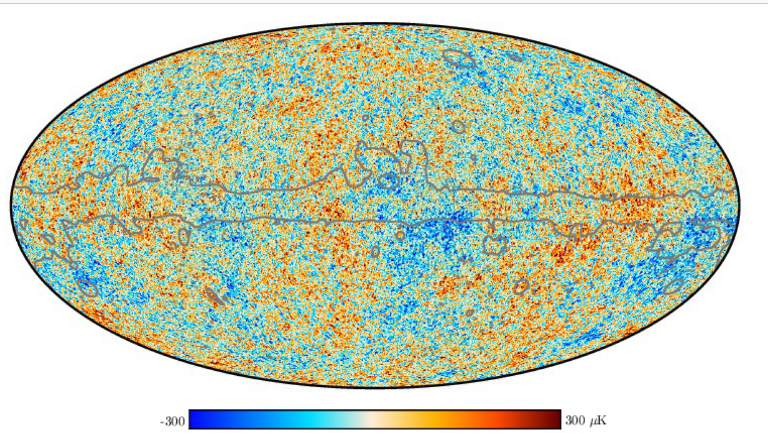The Cosmic Microwave Background (CMB) is the very first light in the universe. CMB photons travelled for (nearly) the entire cosmic age, 13.8 billion years, and therefore they disclose a direct image of the early universe. Accurate observations of the CMB – anisotropy, polarization, frequency spectrum – represent a unique cosmological probe as they reveal physical processes at work well before the cosmic structures we see today were formed.
Our group has been active in the CMB field for almost three decades and is currently at the forefront of new international efforts. In the past 25 years we played a leading role in the ESA Planck space mission, with responsibility of the design, development and calibration of one of the two Planck instrument (LFI, Low Frequency Instrument) and major contribution to the data analysis. The Planck results provided strong confirmation of the standard LCDM model and measured the main cosmological parameters to unprecedented accuracy.

Building on the Planck experience, our group is currently engaged in a number of new international projects (with support by ASI, INFN, MIUR) to push CMB science beyond the current state of the art. The main direction is the search for signatures of primordial gravitational waves in the CMB polarization pattern, the so-called “B-modes”. These observations probe the “inflation era”, just a tiny fraction of a second after the Big Bang, at energies unattainable with any conceivable terrestrial experiment. We are currently involved in three CMB polarization experiments:
> LSPE/Strip, a ground based CMB telescope with polarization-sensitive detectors, to be deployed at the Teide Observatory, Canary Islands. Strip, will be operated in combination with the balloon-borne instrument SWIPE within the LSPE programme.
> QUBIC, a high-sensitivity polarimeter based on a novel design which exploits the bolometric interferometry technique. The instrument will be deployed at the Llama observing site (5000m), in the Argentinian Andes.
> LiteBIRD, a JAXA-led space project to measure CMB polarization over the whole sky in the 40-400 GHz frequency range. As part of the European team, we are involved in the LiteBIRD Medium-High Frequency Telescope with contributions to instrument calibration, simulations, and preparation for data analysis.
In addition, we collaborate in the COSMO experiment, a differential Fourier Transform microwave spectrometer, designed to probe small deviations of the CMB frequency spectrum from a pure blackbody. The measurements will be carried out from Dome C, Antarctica.
CMB instruments must measure extremely small signals (fractions of micro-Kelvin) and require innovative solutions. Our group is active in mm-wave and micro-wave technology development, in collaboration with ASI, ESA, industrial partners, as well as other Research Institutes and Universities. Our Microwave Laboratory is equipped with two anechoic chambers and a near-field system for precise characterization of CMB instrumentation and other microwave systems. The lab is also an excellent opportunity for training students and young researchers.
Our group is also very active in CMB data analysis, which by nature requires a deep knowledge of the instrument and its potential systematic effects. Our research includes refined simulations and interpretation of the data. We are involved in research programs (e.g. ERC H2020 EU-funded BeyondPlanck) aiming at novel approaches to CMB data analysis, taking into account instrumental effects and astrophysical foreground emissions from the Milky Way and from extragalactic sources.